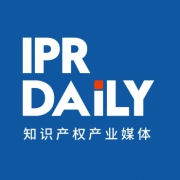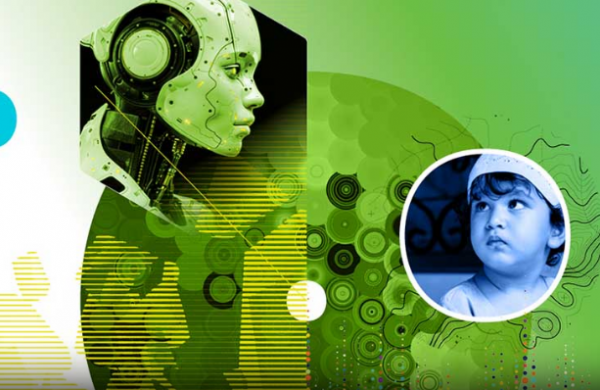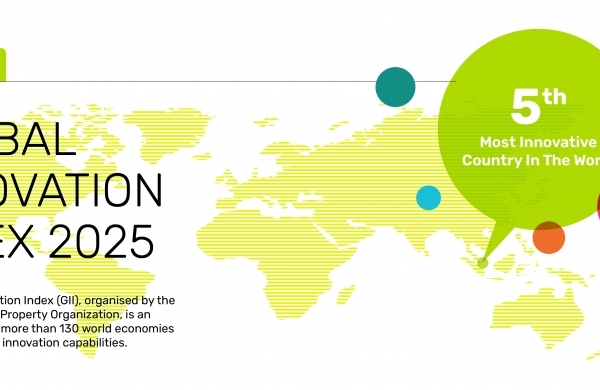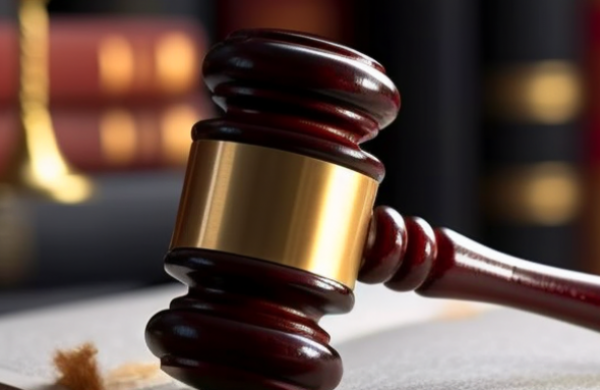Did not receive verification mail? Please confirm whether the mailbox is correct or not Re send mail

IPR Daily
- 2022-10-08 20:40:40
Patenting Artificial Intelligence in the Life Sciences: a practical Guide
A software product (an implementation of an AI algorithm or model) – the AI software may have some level of genericity, or have been specifically designed for the target application;
Application of the AI software to solve a technical problem in the life sciences domain (the target application) – for example:
To identify critical parameters and subsequently predict a given outcome – improvement of a life science method (eg, diagnostic or treatment guidance); or
To identify the best molecule candidate – improvement of a product used in life sciences (eg, a drug); and
The training data used to feed a machine learning algorithm – this data is usually secret (it tends to be expensive to collect and prepare and is subject to privacy considerations).
Time is needed to generate more experimental data to ensure optimal scope of protection;
The invention could not be described in a reproducible way without disclosing training data that should remain secret;
Patent case law is not favourable in terms of patent eligibility;
Infringement is hard to detect;
The lifecycle of the invention is short; and
The filing behaviour of the competition is not active.
State-of-the-art AI technology is used; and
A diagnostic method is already known for the disease.
Process retrospective data from clinical studies;
Identify haemostatic factors with clinically relevant predictive power; and
Elaborate a model fed with those factors that is able to predict gastrointestinal bleeding (this model is encapsulated in a web platform and openly accessible).
assessing the level of three haemostatic factors: fibrinogen, the adenosine diphosphate and the thrombin-dependent platelet aggregation in such children,
comparing these levels to corresponding levels in a control population, for each of these haemostatic factors and
concluding as to the bleeding prediction of such children.*
providing computer-readable data comprising a plurality of parameters ... and diagnostic outcomes ... to a machine learning model
identifying the predictive parameter among the plurality of parameters from the machine learning model.
identifying a predictive parameter to predict the upper gastrointestinal bleeding of decompensated cirrhotic children from a machine learning model, by:
providing computer-readable data comprising a plurality of parameters … and diagnostic outcomes … to the machine learning model
measuring the identified predictive parameter and computing the prediction.*
providing computer-readable data comprising a plurality of parameters ... and diagnostic outcomes ... to a specific machine learning model
identifying the predictive parameter among the plurality of parameters from the specific machine learning model.
identifying a predictive parameter to predict the event in said patient from a specific machine learning model, by:
providing computer-readable data comprising a plurality of parameters ... and diagnostic outcomes ... to the specific machine learning model
measuring the identified predictive parameter and determining the prediction.*
Does the invention allow a technical problem to be solved?
Is the invention in the AI technology itself?
Did the AI technology result in a novel and inventive method or device?
Discussion about artificial intelligence (AI) is booming and examples of AI applications are being reported in all technical fields, including the life sciences. While there is much hype about the fourth industrial revolution and how companies in all fields will either reap benefits from AI or be threatened by it, there is a need for detailed advice on how to deal with AI innovations. This article attempts to give specific pointers on the application of AI in the life sciences field. In particular, the use of AI involves three different elements:
STRATEGY: KEEP THE INVENTION SECRET, PATENT IT OR JUST PUBLISH IT?
This question should be familiar to innovative organisations: should we keep an invention secret, publish it or patent it? For inventions involving AI and life sciences, this strategic choice is even more difficult to make as there is uncertainty regarding what, if anything, can be patented.
Keeping part of an invention secret is an option if:
Any decision to keep part of an invention secret should be re-evaluated periodically to ascertain whether the situation has changed.
If patient data is used in an AI invention, the data must generally remain secret for data privacy reasons. In many practical cases, the collection and preparation of data is such a costly process (both in terms of time and resources) that there is a strong incentive to keep the training data secret, even without a legal obligation of secrecy. The patent attorney must assess whether the invention could be considered reproducible without disclosing the training data used.
If the lifecycle of the invention is short and the filing behaviour of the competition is not active, it may be an option to simply keep the invention secret or to develop a national filing strategy in countries where patents are granted quickly. In addition, when specific restrictive patent considerations apply to this type of invention (e.g., reproducibility, adverse case law or low enforcement opportunities), companies may become even more reluctant to file a patent application. This is where the strategic advice of a patent attorney becomes necessary.
On a technical level, a distinction must be made between AI algorithms that are considered state of the art (e.g., the algorithms and underlying mathematical framework have been described in literature) and those that have some level of inventiveness. Most life sciences applications rely on known models which cannot be patented as such. Moreover, many jurisdictions exclude ‘pure’ AI algorithms (ie, without a link to technical problem) from patentability, and qualify them as abstract methods (eg, the United States and Europe).
If an AI technology has been further developed (in the sense of evolving the algorithmic framework) to allow its application in the life sciences, it may be worthwhile considering protecting the new algorithmic part of the technology as a specific solution to the technical problem to be solved. The patent attorney must assess the optimal level of disclosure for the invention.
The invention originating from the application of AI technology may be protected without actually mentioning any AI technology in the independent claims.
PATENTING AI INVENTIONS
Figure 1: Questions and options for patenting AI inventions
Question 1: Does the invention allow a technical problem to be solved?
Pure AI algorithms are not usually patentable because they are considered abstract or mathematical methods. In general, in order to be eligible for patentability in the life sciences field, the invention should involve a solution that would also be patentable in the absence of AI – for example, the optimisation of a diagnostic method by identifying a set of key parameters having a predictive value for a given situation is considered a patentable invention. If question 1 can be answered ‘yes’, then you can proceed to question 2.
Question 2: Is the invention in the AI technology itself?
Continuing with the example of the diagnostic method, such an optimisation method must be novel and inventive in view of the prior art. Just applying a state-of-the-art AI technology to a new application may not be considered inventive. For example, claiming the use of AI technology for providing a new parameter for diagnosing a disease may not be considered inventive, when:
In this case, the key inventive aspect may be the choice of training data. In this type of situation, further inventive step pointers should be looked for (eg, a surprising result or prejudice against this approach). If these pointers cannot be found, patenting the use of AI for this particular problem is probably not a viable option.
In opposition, if the answer to question 2 is 'yes', the AI technology itself may be patentable (if linked to the technical topic of question 1). Regardless of the answer, it is advisable to consider question 3.
Question 3: Did the AI technology result in a novel and inventive method or device or product?
If the answer to this question is 'yes', then regardless of the answer to question 2, the resulting method or device or product may be patentable. In many cases, the independent claims would not mention the AI technology at all.
When questions 2 and question 3 are answered 'yes', the inventive step should still be assessed in the standard way.
A PRACTICAL EXAMPLE: DNAlytics
DNAlytics is a start-up specialised in data-driven healthcare. In the framework of a partnership with an academic partner, it has developed a method for the assessment of upper gastrointestinal bleeding in decompensated cirrhotic children (Pediatric Transplantation, Bonnet N et al (2019) e13390).
While awaiting a transplant, children suffering from decompensated cirrhosis face the risk of upper gastrointestinal bleeding because of ruptured oesophageal or gastric varices – one of the most severe complications related to chronic liver disease. Such bleeding could become life-threatening and therefore the risk stratification of bleeding is important to identify those cases which may benefit from a prophylactic treatment with band ligation or sclerotherapy. In current clinical practice, there is no paediatric recommendation for primary prophylaxis with endoscopic ligation, sclerotherapy or non-specific beta‐blockers in children.
In such a situation, state-of-the-art AI technology has been used to:
Assessing the risk of upper gastrointestinal bleeding in decompensated cirrhotic children is a patentable subject matter in most jurisdictions. The answer to question 1, therefore, is 'yes'.
The AI technology used by DNAlytics was state of the art. The innovation lay mostly in the selection of data with relevant predictive power and in identifying the AI approach (machine learning methods for feature selection and predictive modelling) most suitable to the problem and data dimensionality. As a result, the answer to question 2 should be 'no' – such use of AI in this optimisation problem will be considered an obvious approach to a skilled person.
The answer to question 3, however, would be 'yes', since such an assessment method was not known. In this case, a patent application could have been filed for protecting “an *in vitro* diagnostic method wherein the value of each of these three parameters would have been assessed in such children in order to predict whether an upper gastrointestinal bleeding is likely to happen”. The main claim of such patent could read as follows:
*Claim A: An *in vitro* diagnosis method of upper gastrointestinal bleeding in decompensated cirrhotic children comprising the steps of:
Such an *in vitro* diagnostic claim is eligible for patentability at the EPO following the Enlarged Board of Appeal Decision G01/04. Such a claim would need to be further adapted to the US practice as the USPTO applies more stringent criteria to the eligibility of diagnostic methods. One possibility is to add a treatment step in such a claim.
In summary, in this specific example, a technical problem (ie, predicting bleeding in patients) was solved using AI technology. The solution of this technical problem (ie, the diagnostic method with three predictive parameters as inputs) could have been a potentially patentable technical invention.
The AI method used, as such, was state of the art. However, a claim might have been drafted as follows:
*Claim B1: Computer-implemented method to identify a predictive parameter for upper gastrointestinal bleeding in a decompensated cirrhotic child, the method comprising:
Claim B2: Computer-implemented method to predict upper gastrointestinal bleeding of decompensated cirrhotic children, the method comprising:
Claim B1 or B2 should be eligible for patentability at the EPO as a technical problem (ie, identifying an event, preferably a parameter, to predict the bleeding) has been solved. The difference between B1 and B2 is that B2 further incorporates the step of carrying out the diagnostic method itself. There is case law to suggest that this is necessary to fulfil the requirements of patentability at the EPO, so the B2 variant should at least be included as a dependent claim.
Such a claim might be considered novel, as it can be assumed that nobody would have ever thought of using AI in this very specific context. However, the inventiveness of such a claim may be rather difficult to defend as, at first sight, it just seems a routine use of a state-of-the-art AI. The choice of the application “predict the upper gastrointestinal bleeding of decompensated cirrhotic children” seems to represent an arbitrary selection among the unlimited number of applications wherein AI technologies could be used. The invention seems to lie more in the overall workflow used to solve the technical problem, rather than in the choice of AI methodology used for feature selection or for computing the prediction. In the absence of any prejudice in the art to identify such parameters, it is anticipated that the inventiveness of such a claim will be difficult to defend.
Imagine that the AI technology used would have been improved (ie, AI technology X) in order to allow it to solve similar technical problems and not only just the one of the invention. This new algorithm component, specific for the technical problem to be solved, could be protected when run on a computer for solving this problem:
*Claim C1: Computer-implemented method to identify a parameter in a patient predictive of an event, the method comprising:
Claim C2: Computer-implemented method to predict a parameter predictive of an event in a patient, the method comprising:
However, the C-type of claim is only really useful if it can be applied to the identification of predictive parameters in different clinical situations with different training data. If the only actually relevant prediction method is the *in vitro* method of Claim A, then use of optimisation method Claim C1 and C2 will invariably result in a prediction method according Claim A. In that case, it may be more desirable to directly protect the method (Claim A) rather than the way of getting there (Claim C1 or C2).
COMMENT
To recap, the three questions that are key when assessing the patentability of AI inventions in the life sciences are as follows:
If the answer to question 1 is 'no', then patenting is generally not possible, at least not in Europe or the United States. If the answer to question 2 is 'yes', the AI method may be protected. Regardless, a 'yes' to question 3 indicates that the obtained method or device is patentable, in which case the independent claims may not even refer to AI technology.
It may seem counterintuitive that a claim of an invention based on AI may not refer to any AI technology at all. However, there are certain advantages to such an 'AI-less' claim of an AI-based invention. It removes any doubt as to whether the training data should be disclosed. If the AI algorithm is not part of the claim, then clearly the invention can be worked without having access to the training data. It also removes the need to claim the AI algorithm in broad enough terms to make working around the claim impractical.
In case specific AI technologies can be applied successfully to a more broadly defined class of technical problems (Claims C1 and C2), then the use of AI can be claimed.
Table 1: various options
The authors wish to thank Prof. Xavier Stéphenne (Pediatric gastro-enterology and hepatology department, Cliniques universitaires Saint-Luc, Brussels, Belgium), co-author of the development quoted as example, for reviewing and commenting of the present manuscript.
This article first appeared in IAM Life Sciences: Key issues for senior life sciences executives 2020, a supplement to IAM, published by Law Business Research - IP Division.
Author
Caroline Pallard

Partner
Caroline Pallard is a European and Dutch patent attorney and a partner at NLO. She joined NLO in 2006 after working at DSM/Gist-brocades in Delft and completing a postdoctoral fellowship at the Dutch Cancer Institute, where she specialised in immunology and biochemistry. She practises in the area of biotechnology, particularly molecular biology, genomics, biochemistry, haematology and microbiology. Dr Pallard has extensive experience of drafting and prosecuting complex patent applications and supporting licence negotiations and IP due diligence, including for initial public offerings. She frequently advises biotech start-ups on their IP strategies.
Harm van der Heijden

Partner
Harm van der Heijden is primarily active in the fields of electronics, communications technology and software. As a partner of NLO, he leads a team of junior and senior patent attorneys, helping clients to maintain their competitive edge by protecting and asserting their intellectual property. Dr Van der Heijden has a PhD in plasma physics and a previous career as an industry researcher and developer in signal processing software, medical devices and integrated circuit design. Besides drafting and prosecuting patent applications, he is also involved in patent litigation procedures and licence negotiations.
Source: NLO
Editor: IPR Daily-Ann
- I also said the two sentence
- Also you can enter 140words
 TOP IPR U.S. Lawyers 10 & Firms 10 Selection Officially Launched by IPR Daily
TOP IPR U.S. Lawyers 10 & Firms 10 Selection Officially Launched by IPR Daily WIPO Global Innovation Index 2025: China Enters Top 10
WIPO Global Innovation Index 2025: China Enters Top 10 Singapore ranks 5th in the 2025 Global Innovation Index; climbed two spots in Innovation Outputs
Singapore ranks 5th in the 2025 Global Innovation Index; climbed two spots in Innovation Outputs Federal Circuit lacks jurisdiction over award that doesn’t raise issue of patent law
Federal Circuit lacks jurisdiction over award that doesn’t raise issue of patent law




